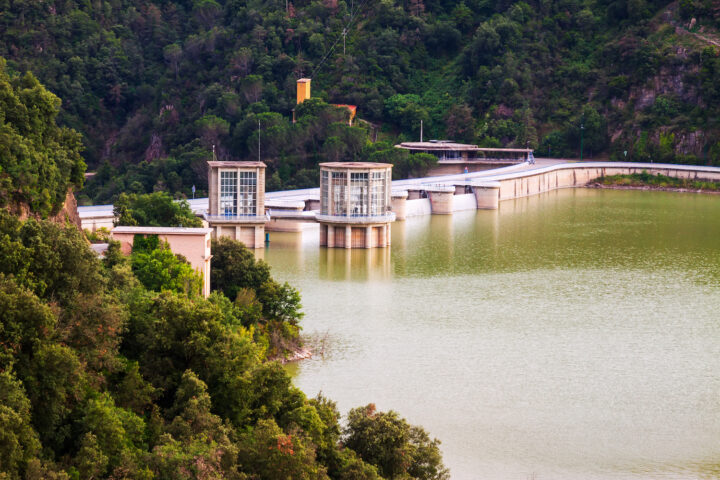Industrial Hygiene on Land Development Projects: A Guide for Filipinos
Blogs
December 10, 2022

In everyday life, hygiene pertains to the routines we practice daily in order to maintain our health and protect ourselves from illness. We do this through basic personal hygiene, like washing our hands and brushing our teeth. We also observe food hygiene to keep our food fresh and free of contaminants, and we practice workplace hygiene to keep our commercial office spaces clean and safe for everyday occupation.
But hygiene doesn’t only cover the practices we observe as individuals. There’s also industrial hygiene, which plays a key part in the planning and construction of industrial spaces. Industrial hygiene contributes a lot to preserving occupational health on a large and complex scale, like when activities such as manufacturing, logistics, warehousing, or shipping are involved.
Championing industrial hygiene in its operations, Aboitiz Infracapital takes the necessary steps to ensure a safe and conducive working environment in its economic estates including the LIMA Estate in Batangas and the Mactan Economic Zone II and West Cebu Industrial Park in Cebu. These facilities are registered with the Philippine Economic Zone Authority (PEZA) and abide by international standards of occupational safety and health management.
This guide serves as a short introduction to the concept of industrial hygiene.
What Does the Term “Industrial Hygiene” Entail?
Industrial hygiene is widely defined as the practice of identifying and responding to environmental stressors or workplace hazards that may affect the quality of life of industrial workers and other land occupants. When properly implemented, industrial hygiene can decrease workers’ risks of getting injured, getting sick, or having their senses permanently impaired while they’re on the job.
There are five basic steps to practicing industrial hygiene on land and infrastructure development projects, and they are the following:
- Anticipating any potential hazards in the industrial workplace environment;
- Recognizing these hazards for what they are;
- Evaluating what exact dangers they might pose to occupants;
- Communicating what needs to be done about these hazards, and;
- Working out proper solutions using reputable and science-backed methods.
Obstacles to the practice of industrial hygiene are typically identified through worksite analysis. The analysis can include the jobs to be done on the site, the nature of the operations, the machinery used, and the like.
A person that oversees the implementation of industrial hygiene on a property is called an industrial hygienist. However, the achievement of full industrial hygiene is a multi-disciplinary goal that also involves developers, engineers, chemists, biologists, environmental scientists, and other professionals. Ideally, these people work closely together on the land development projects to ensure sustainable, safe, and healthy industrial working conditions for all workers over the long term.
What Factors Contribute to Proper Industrial Hygiene on Land Developments?
In order for any developer to say that they observe good industrial hygiene on their property, there are several factors that they have to consider. Among the most important determinants of proper industrial hygiene are the following:
The Mitigation of Airborne, Biological, or Chemical Hazards
Those who are in charge of safeguarding industrial hygiene on a property must do a detailed survey of the following hazards:
- Dangerous airborne particles like asbestos or combustible dust;
- Biological hazards like viruses, harmful bacteria, and mold, and;
- Chemical hazards that can either be inhaled, absorbed through contact with skin, or ingested by occupants.
There are several approaches that an industrial hygiene team can take when mitigating these hazards. For example, if chemicals must be handled as part of a manufacturing process, the team can study the impact of substituting some chemical substances for less risky ones. The team can also take charge of drafting exhaustive protocols for safe handling or safe operation of tools around hazards.
The Accessibility of Clean and Potable Water on the Property
A second factor that contributes to an industrial development’s overall industrial hygiene is access to clean, potable water. The developer must work with their partner industrial hygienists and partner engineers in order to build functional water infrastructure within the development. The water supply system must be able to meet the demands of individual- and industrial-level activity and it must facilitate proper filtration of biological and chemical contaminants from water to be considered safe for consumption.
The Availability of a Wastewater and Sanitation System
Yet another factor that’s important to industrial hygiene is the proper coursing and treatment of wastewater that comes from the facility. Untreated wastewater and sewage congestion can pose a serious health threat to workers and other everyday occupants of an industrial property. That’s why the installation of a reliable sanitation and wastewater system should always be among a developer’s priorities.
Proper Management of Noise Levels Inside the Industrial Complex
Noise is also a factor to consider when it comes to industrial hygiene maintenance within a development, as prolonged exposure to noise can cause great discomfort and even hearing impairment on the part of workers. Developers should always listen to industrial hygienists if the latter can proffer solutions for minimizing the impact of loud, unpleasant sounds.
Optimal Temperature and Ventilation
Lastly, temperature can be a major contributor to industrial hygiene (or lack thereof). Developers should consider building cooler work environments so as to offer relief from the Philippines’ scorching heat. Proper ventilation should also be part of the development plan, as the circulation of fresh air is essential to keeping workers healthy and comfortable.
Aboitiz InfraCapital: Providing Safe, Sustainable, and Healthy Workplaces
The Aboitiz Group believes that industrial hygiene is extremely important. Aboitiz InfraCapital continues to assess and manage environmental factors that could cause illnesses, accidents, and other types of impairment of people's wellbeing in order to protect the safety and health of our employees.
Further, this leading infrastructure company employs analytical tools and methodologies, engineering interventions, and work practice controls to anticipate and effectively address safety and health risks. With these systems in place, Aboitiz InfraCapital continues to build assets that not only support the country’s economic growth and development but also highlight the best industrial safety practices the Philippines has to offer.































